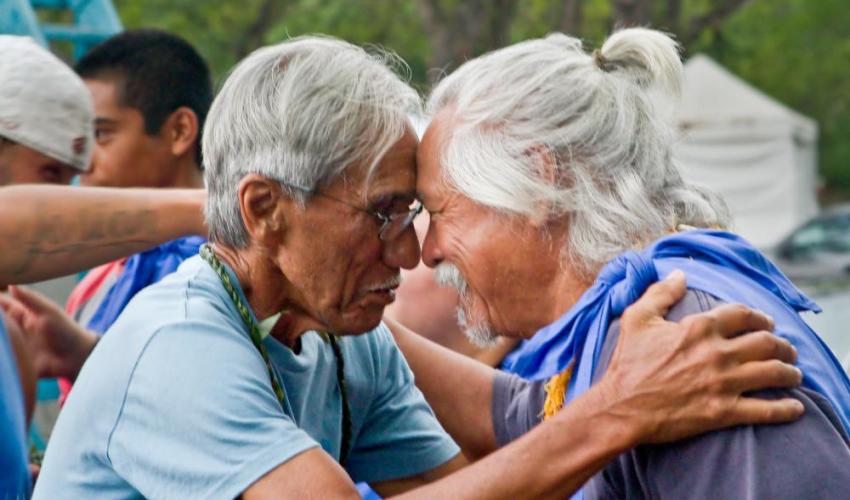“Many Hawaiian communities have begun to draw from their cultural heritage for knowledge and wisdom that can help restore marine ecosystems so that they can, once again, provide for these communities,” say Kevin Chang, Executive Director of KUA (Kuaʻāina Ulu ʻAuamo) and Charles Young, member of KUPA (Kamaʻāina United to Protect the ʻĀina).
Aia a kau ka i‘a i ka wa‘a, mana‘o ke ola. One can think of life after the fish is in the canoe.
Simply put, this proverb states that greater plans cannot be made until immediate needs have been met. It also reflects an ongoing gradual change in the way that Hawaiʻi’s natural resources are managed.
With our big-box superstores and consumer lifestyles, it’s easy to forget that Hawai’i is one of the most isolated communities in the world. But there is also a growing awareness that our home is not as green, rich and abundant as it once was – we now have to import 85-90% of our food. Many communities affected by this new reality have begun to draw on their cultural heritage for knowledge and wisdom that can help to restore marine ecosystems so that oceans can once again support them.
The Hawaiian word for wealth is waiwai. Wai means water. Prosperity was once measured by the vitality of the environment Native Hawaiians needed to live and thrive. However, in the context of our capital-based economy and heavy reliance on imports, it’s easy to lose sight of the importance of maintaining a healthy and productive environment to support our food and other needs.
Community-Based Natural Resource Management (CBNRM), a resource-management approach that is being revived in Hawaiʻi and abroad, is rooted in traditional native Hawaiian culture that once secured the abundance of natural resources, from mountain to coast. Firmly built on the knowledge and experience of local experts known as konohiki, this system is still workable, relevant and important today.
In 2011, Hui Makaʻāinana O Makana, a community-based non-profit organisation led by the area’s fishing families, proposed a new set of fishing regulations based on traditional native Hawaiian fishing practices. In 2015, Hawaiʻi Governor David Ige signed off on these new regulations for the Ahupuaʻa (land section) of Hāʻena on Kauaʻi island. The new rules are the first of their kind since the creation of the Community-Based Subsistence Fishing Area law in 1994 and represent a growing shift in resource management that calls on the State to work directly with local communities.
More recently, the Board of Land and Natural Resources (BLNR) adopted new rules for the Ahupua’a of Kaʻūpūlehu, the site of an historic settlement on the west coast of Hawaiʻi Island. These rules, pending the Governor’s signature, include a 10-year ‘rest period’ for part of the reserve. Again, this move was driven by local communities.
Community management provides a ‘middle ground’ approach to conserving coastal fisheries – providing an alternative to long or indefinite closures – and helps to replenish neighbouring fishing grounds. Such a re-birth of traditional practices is instilling a sense of empowerment among Hawaiian communities.
A combination of State and community management can also help Hawaiʻi in its struggle to enforce resource laws across a huge area of land and sea with diminishing budgets and a growing, disconnected population. It helps respond to mutual concerns and provides an alternative to vigilantism, which has put some members of Hawaiian fishing communities at risk.
The state and national government cannot manage Hawaiʻi’s declining resources alone, and native Hawaiians have a cultural connection to their environment that is deeply rooted in kuleana or responsibility to one’s place. CBNRM empowers communities to take ownership of their resources and destiny and provides an opportunity to leverage government and private investment for conservation and resource management.
In the spirit of Lawai’a Pono, which means to fish righteously, Hawaiian communities are increasingly knowledgeable and vigilant over the use and regeneration of their fisheries and are playing an active role in sustaining and co-managing marine resources.
– Kevin Chang, Executive Director of KUA (Kuaʻāina Ulu ʻAuamo) and Charles Young, member of KUPA (Kamaʻāina United to Protect the ʻĀina).











